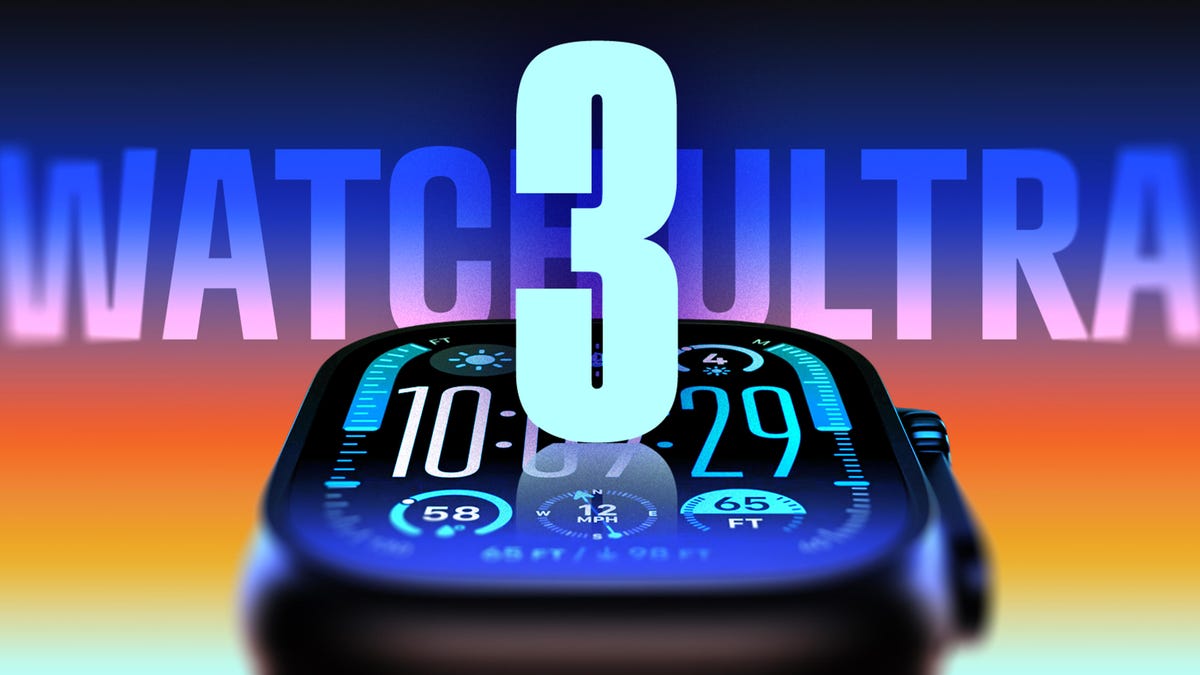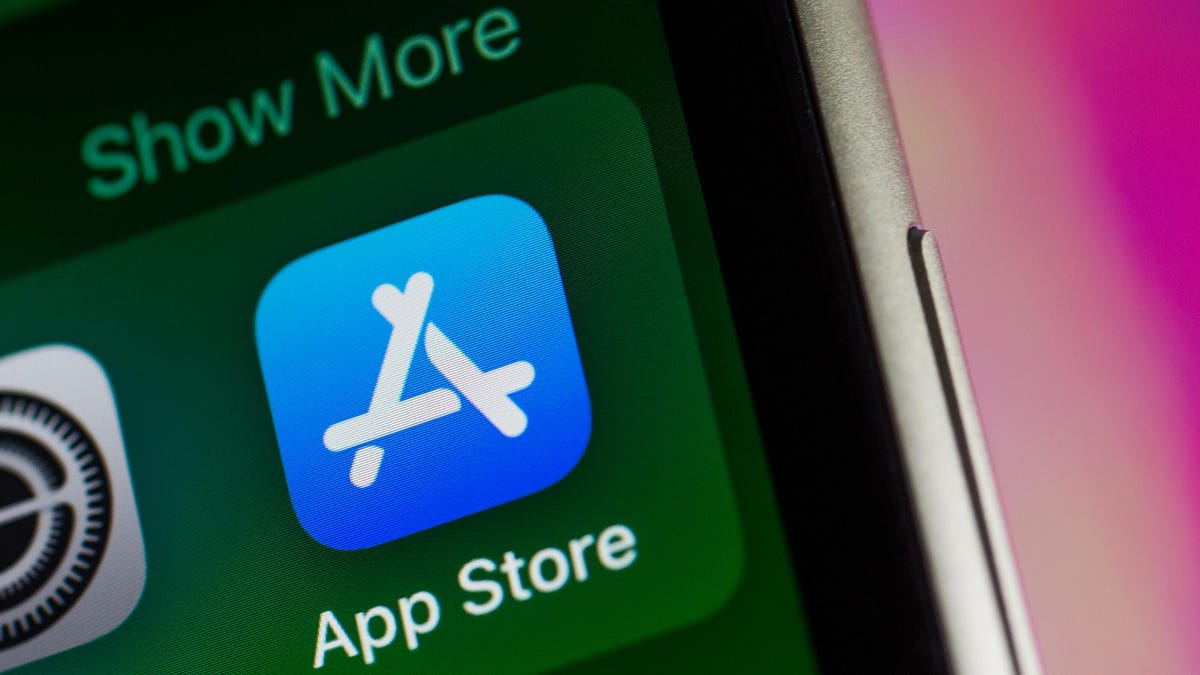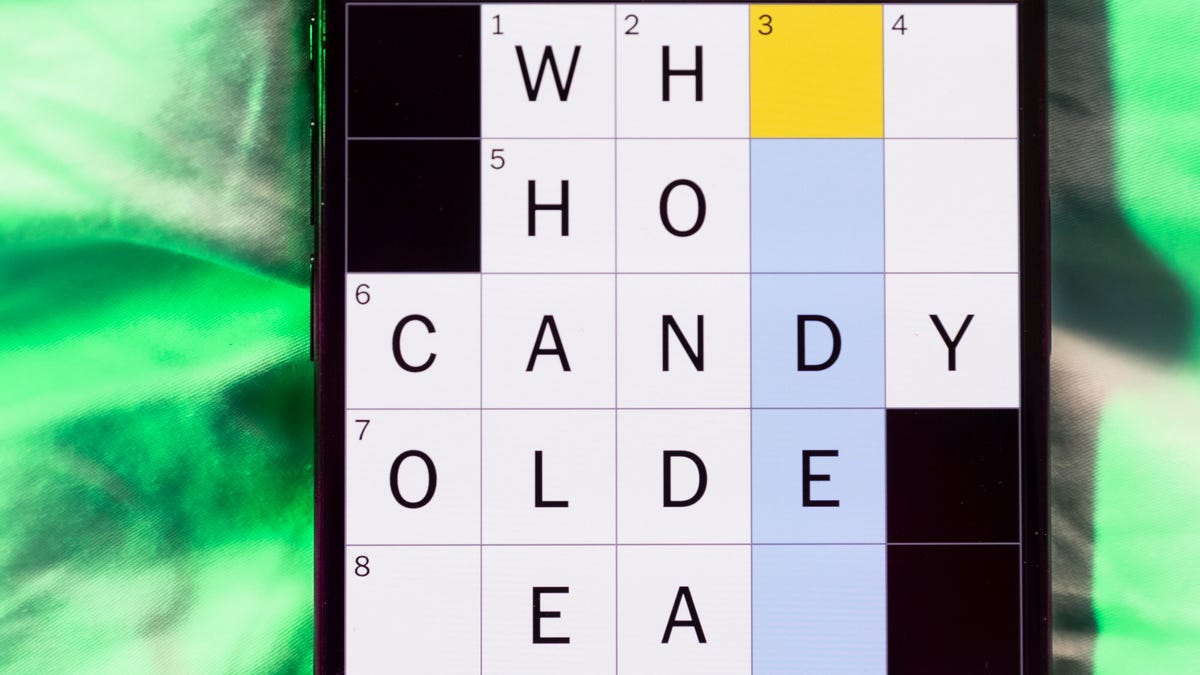Technologies
All the Apple Watch Ultra 3 Changes: More Battery Life, Satellite Texting, 5G and More
After two years, Apple’s top-performing smartwatch gets a substantial update.

Since its introduction, the Apple Watch Ultra has been the Apple smartwatch choice of long-distance runners, hikers, divers — and less-energetic folks who just prefer a chunky watch with extended battery life.
After releasing minimal updates for the last couple of years, Apple announced at its big fall event the new Apple Watch Ultra 3, which adds a brighter, larger display, 5G cellular communication, satellite connectivity, a battery life increase of up to 42 hours and the ability to detect whether you might be suffering from hypertension.
Though Apple Watch fans might still be satisfied with the Ultra 2 or the Apple Watch Series 10, the Ultra 3 is ready for those who want the most advanced smartwatch Apple has to offer.
The Apple Watch Ultra 3 costs $799 (£749, AU$1,399), and preorders are now live. The first shipments and in-store availability will arrive on Sept. 19.
Don’t miss any of our unbiased tech content and lab-based reviews. Add CNET as a preferred Google source.
The Apple Watch Ultra 3 screen size is back on top
The brilliant screen on the Apple Watch Ultra 3 is now slightly larger than its predecessor, at a 422×514-pixel resolution (up from the Ultra 2’s 410×502 pixels), though the case itself hasn’t expanded. Instead, Apple has slimmed the bezel to bring the active edge of the screen closer to the frame.
Speaking of the frame, it’s now created using a 3D printing process that uses 100% recycled titanium and half the amount of raw materials as earlier generations.
The screen is also better than the Ultra 2, with an LPTO3 OLED always-on Retina display that has the same faster refresh rate introduced with the Series 10. That means you’ll see a second hand that continually updates, or an active stopwatch timer, without having to raise your wrist and engage the screen. Screen brightness when viewing from an angle has also improved, according to Apple.
Even more battery life
The Apple Watch Ultra and Ultra 2 boasted much longer battery stamina than the regular watch, thanks to their physically larger batteries: about 36 hours of regular use, or 72 hours with low power mode on.
With the Apple Watch Ultra 3, you might forget the last time you put it onto its charger. Its larger battery and improved battery life get up to 42 hours on a charge. Continuous workouts can extend to 20 hours in low power mode while retaining full GPS and heart rate readings.
The Ultra 3 also joins the Series 10 and Series 11 by offering fast charging. Apple claims 45 minutes of charging will get the watch up to 80% full, or 75 minutes to top out at 100%. Since most people probably aren’t going to run the watch down to zero, a more realistic circumstance is being able to pop it onto a charger for just 15 minutes and gain 12 hours of battery life.
Apple says a number of factors contribute to the improved battery life in the Ultra 3: the more efficient display, larger battery and redesigned radios for 5G cellular and satellite communications. We expected a new processor as well, but surprisingly, the Ultra 3 is powered by the same S10 chip that runs the Apple Watch Series 11 and Series 10.
Connect to satellite services, even without an iPhone
Most phones and smartwatches are designed with the expectation that they operate in areas where cellular or Wi-Fi networks are easily available. The Apple Watch Ultra almost expects you to get lost, with that larger battery and dual-GPS location tracking. But if something unfortunate happens while you’re away from everything, you still want to be able to signal for help or keep friends alerted to your whereabouts.
The Ultra 3 now includes on-device satellite communication, which means as long as the watch has a view of the sky, it can connect to satellites. In most situations, you’d also have a satellite-capable iPhone with you, but that’s not helpful if the phone’s battery is drained. Apple says it redesigned the radios and antenna to double the signal strength.
As with the iPhone, Emergency SOS via satellite is free for two years, though Apple has not announced any pricing for the service since it was launched. Text messaging and Find My services via satellite are also available as long as you have an active cellular plan.
As for cellular connections, all configurations of the Apple Watch Ultra include cellular capabilities, and now the Ultra 3 is capable of connecting to 5G networks. It uses 5G RedCap (for «reduced capacity») technology, which delivers 5G access but without the power requirements that a device such as the iPhone can handle easily.
Health and fitness features at the forefront
As with the Apple Watch Series 11, the Ultra 3 also looks for possible hypertension, or high blood pressure, based on readings it takes during the course of a month. The hypertension detection feature was approved by the US Food and Drug Administration the day after it was announced, and it will be available in 150 countries and regions this month.
That’s in addition to existing heart rate and ECG measuring, as well as the ability to detect blood-oxygen levels, a feature that’s been temporarily blocked in the US due to litigation (though Apple recently developed a workaround).
Apple also announced that the Sleep app will include a new Sleep Score feature to help users track and adjust sleep more easily.
When Apple announced WatchOS 26 and iOS 26, it introduced Workout Buddy, a virtual companion that provides stats and encouragement while you’re working out, such as on a bike ride, run or walk. (CNET’s Vanessa Hand Orellana got details from Apple’s team developing it.) As a watch designed for workouts, it’s natural that the Apple Watch Ultra 3 brings Workout Buddy along for the ride/run/amble.
Other health and workout features carry over from the Ultra 2, such as water resistance to 100m and scuba diving to 40m, IP6X dust resistance and durability in extreme temperature and altitude environments. It includes dual GPS (L1 and L5) radios for more precise location tracking and wayfinding.
Technologies
Today’s NYT Strands Hints, Answers and Help for Dec. 25 #662
Here are hints and answers for the NYT Strands puzzle for Dec. 25, No. 662.

Looking for the most recent Strands answer? Click here for our daily Strands hints, as well as our daily answers and hints for The New York Times Mini Crossword, Wordle, Connections and Connections: Sports Edition puzzles.
Today’s NYT Strands puzzle has a holiday theme, and if you know a certain Christmas carol, you’ll quickly determine which words to hunt down. Some of the answers are difficult to unscramble, so if you need hints and answers, read on.
I go into depth about the rules for Strands in this story.
If you’re looking for today’s Wordle, Connections and Mini Crossword answers, you can visit CNET’s NYT puzzle hints page.
Read more: NYT Connections Turns 1: These Are the 5 Toughest Puzzles So Far
Hint for today’s Strands puzzle
Today’s Strands theme is: Carolers count.
If that doesn’t help you, here’s a clue: Five golden rings.
Clue words to unlock in-game hints
Your goal is to find hidden words that fit the puzzle’s theme. If you’re stuck, find any words you can. Every time you find three words of four letters or more, Strands will reveal one of the theme words. These are the words I used to get those hints but any words of four or more letters that you find will work:
- RIMS, HIMS, MARS, CHIME, CHIMES, MADS, DATE, DIAL, WAIL
Answers for today’s Strands puzzle
These are the answers that tie into the theme. The goal of the puzzle is to find them all, including the spangram, a theme word that reaches from one side of the puzzle to the other. When you have all of them (I originally thought there were always eight but learned that the number can vary), every letter on the board will be used. Here are the nonspangram answers:
- LORDS, MAIDS, SWANS, LADIES, PIPERS, DRUMMERS
Today’s Strands spangram
Today’s Strands spangram is CHRISTMASDAYS. To find it, look for the C that’s three letters down on the far-left row, and wind across.
Don’t miss any of our unbiased tech content and lab-based reviews. Add CNET as a preferred Google source.
Toughest Strands puzzles
Here are some of the Strands topics I’ve found to be the toughest in recent weeks.
#1: Dated slang, Jan. 21. Maybe you didn’t even use this lingo when it was cool. Toughest word: PHAT.
#2: Thar she blows! Jan.15. I guess marine biologists might ace this one. Toughest word: BALEEN or RIGHT.
#3: Off the hook, Jan. 9. Similar to the Jan. 15 puzzle in that it helps to know a lot about sea creatures. Sorry, Charlie. Toughest word: BIGEYE or SKIPJACK.
Technologies
Judge Blocks Texas App Store Age-Check Law
A preliminary injunction found the Texas law, set to begin Jan. 1, is «more likely than not unconstitutional.»

A new Texas state law set to take effect on Jan. 1 would have required app stores to implement age verification processes. But the law has been put on hold, at least temporarily, by a federal court judge.
As reported by the Texas Tribune, Senate Bill 2420, also known as the Texas App Store Accountability Act, is the subject of a temporary injunction issued by US District Judge Robert Pitman.
Pitman said in his decision that the law as written is broad, vague and «more likely than not unconstitutional.» However, he also wrote the court «recognizes the importance of ongoing efforts to better safeguard children when they are on their devices.»
Don’t miss any of our unbiased tech content and lab-based reviews. Add CNET as a preferred Google source.
The Texas law, signed into law by Governor Greg Abbott in May, requires app store operators — including Apple, Google, Nintendo, Steam and more — to build age verification processes for the storefronts and to only allow downloads to minors who obtain parental consent. The injunction is a ruling in an October lawsuit filed by the Computer & Communication Industry Association.
CCIA senior vice president Stephanie Joyce said in a statement, «This Order stops the Texas App Store Accountability Act from taking effect in order to preserve the First Amendment rights of app stores, app developers, parents, and younger internet users. It also protects parents’ inviolate right to use their own judgment in safeguarding their children online using the myriad tools our members provide.»
Other individuals and the advocacy group Students Engaged in Advancing Texas also filed suits over the law, the Texas Tribune reported.
App Store Accountability Act
The bill author, State Senator Angela Paxton, said the bill was meant to give parents «common sense tools to protect their kids and to survive court challenges by those who may have lesser priorities.»
The language of Texas Senate Bill 2420 does not only include mobile app stores from Apple or Google, but any «website, software application, or other electronic service that distributes software applications from the owner or developer of a software application to the user of a mobile device.»
By that definition, websites with links to browser games or mobile game consoles with download options would fall under the Texas law as written. The law also defines mobile devices as including phones and tablets, as well as any other handheld device capable of transmitting or storing information wirelessly.
The parental consent aspect of the law requires those under 18 to have an app store account affiliated with a parent or guardian to purchase or download applications.
Age verification elsewhere
In an effort to keep adult materials out of reach of minors and to protect children from potentially harmful content and interactions, tech companies have been compelled by law or through legal action to verify the age of users.
Roblox, which has a huge audience of minors, began rolling out stricter age verification after investigations and lawsuits hurt its reputation as a safe gaming space. Australia is perhaps the most large-scale example of a government restricting access to online content. In December, Australia began restricting social media access to those 16 and older. Reddit recently challenged that law.
In the US, age verification laws have primarily targeted adult sites. Texas already has a law on the books that requires adult sites to age-block their content. The Supreme Court upheld that law in a June ruling. The UK has also enacted age restriction rules for adult sites as have other US states.
Technologies
Today’s NYT Mini Crossword Answers for Thursday, Dec. 25
Here are the answers for The New York Times Mini Crossword for Dec. 25.

Looking for the most recent Mini Crossword answer? Click here for today’s Mini Crossword hints, as well as our daily answers and hints for The New York Times Wordle, Strands, Connections and Connections: Sports Edition puzzles.
Need some help with today’s Mini Crossword? Of course, there’s a very Christmassy clue involved. And once you solve the entire puzzle, look at the letters used in all the answers and see what they have in common. (5-Across will tell you!) Read on for all the answers. And if you could use some hints and guidance for daily solving, check out our Mini Crossword tips.
If you’re looking for today’s Wordle, Connections, Connections: Sports Edition and Strands answers, you can visit CNET’s NYT puzzle hints page.
Read more: Tips and Tricks for Solving The New York Times Mini Crossword
Let’s get to those Mini Crossword clues and answers.
Mini across clues and answers
1A clue: ___ King Cole, singer with the album «The Magic of Christmas»
Answer: NAT
4A clue: Body drawings, informally
Answer: TATS
5A clue: Letters to ___ (what this Mini was made with)
Answer: SANTA
6A clue: Huge fan, in slang
Answer: STAN
7A clue: «Illmatic» rapper
Answer: NAS
Mini down clues and answers
1D clue: Grandmothers, by another name
Answer: NANAS
2D clue: Abbr. before a name on a memo
Answer: ATTN
3D clue: Org. with long lines around the holidays
Answer: TSA
4D clue: «See ya later!»
Answer: TATA
5D clue: Govt.-issued ID
Answer: SSN
Don’t miss any of our unbiased tech content and lab-based reviews. Add CNET as a preferred Google source.
-

 Technologies3 года ago
Technologies3 года agoTech Companies Need to Be Held Accountable for Security, Experts Say
-

 Technologies3 года ago
Technologies3 года agoBest Handheld Game Console in 2023
-

 Technologies3 года ago
Technologies3 года agoTighten Up Your VR Game With the Best Head Straps for Quest 2
-

 Technologies4 года ago
Technologies4 года agoBlack Friday 2021: The best deals on TVs, headphones, kitchenware, and more
-

 Technologies4 года ago
Technologies4 года agoVerum, Wickr and Threema: next generation secured messengers
-

 Technologies4 года ago
Technologies4 года agoGoogle to require vaccinations as Silicon Valley rethinks return-to-office policies
-

 Technologies4 года ago
Technologies4 года agoOlivia Harlan Dekker for Verum Messenger
-

 Technologies4 года ago
Technologies4 года agoiPhone 13 event: How to watch Apple’s big announcement tomorrow
